- What is a Social Networking App Like Nextdoor?
- How Does an App Like Nextdoor Works?
- Community Apps: Market Growth Stats
- Development Steps for an App Like Nextdoor
- Essential Tech-Stack Needed for Developing an App Like Nextdoor
- Must-Have Features for Developing an App Like Nextdoor
- Cost-Affecting Factors in Developing an App Like Nextdoor
- Benefits of an App Like Nextdoor
- Top Examples of App Like Nextdoor in the Market
- Conclusion
- What Idea Usher Can Do For You?
- Frequently Asked Questions
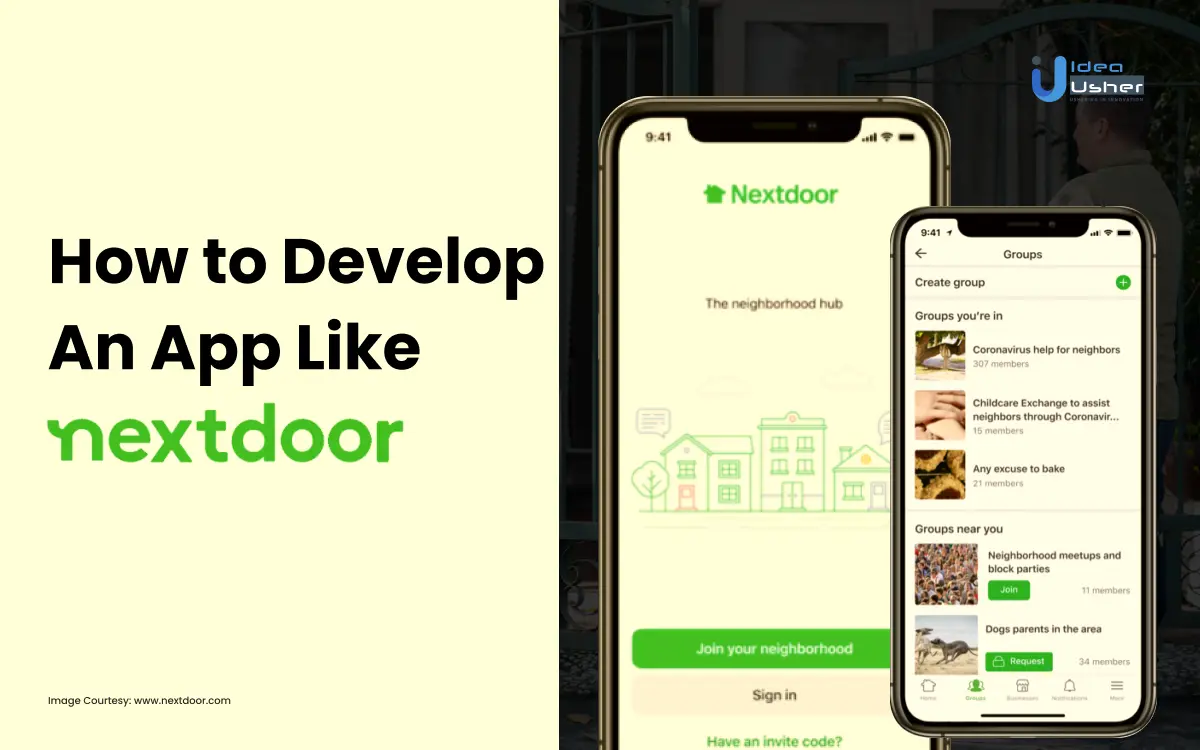
Creating an app like Nextdoor, centered around neighborhoods and community, involves a series of important steps.
This blog will guide you through the essential aspects needed to develop an App Like Nextdoor.
We’ll explore how to choose features that bring neighbors closer, pick the right technology, and understand the key elements in making an app that strengthens local connections.
Join us as we navigate the process of turning the idea of a neighborhood-focused app into a real, user-friendly platform that brings communities together through technology.
- What is a Social Networking App Like Nextdoor?
- How Does an App Like Nextdoor Works?
- Community Apps: Market Growth Stats
- Development Steps for an App Like Nextdoor
- Essential Tech-Stack Needed for Developing an App Like Nextdoor
- Must-Have Features for Developing an App Like Nextdoor
- Cost-Affecting Factors in Developing an App Like Nextdoor
- Benefits of an App Like Nextdoor
- Top Examples of App Like Nextdoor in the Market
- Conclusion
- What Idea Usher Can Do For You?
- Frequently Asked Questions
What is a Social Networking App Like Nextdoor?
Nextdoor, launched in 2011, is a private social networking app focused on local community engagement. It serves as a digital town square, offering a local news feed, event updates, and a platform for recommendations. By connecting neighbors, sharing information, and fostering a sense of belonging, Nextdoor cultivates a tight-knit community vibe. It’s a virtual bulletin board for local happenings, recommendations for services, and friendly connections, embodying the essence of a supportive neighborhood in a digital age.
How Does an App Like Nextdoor Works?
At its core, Nextdoor operates as a hyper-local social networking platform, fostering connections and facilitating communication within neighborhoods. Its functionality is designed to streamline interactions and enhance community engagement.
1. Localized Networking
Nextdoor’s functionality revolves around geographically localized networks. Users verify their addresses to join specific neighborhood networks. This ensures that interactions and updates are pertinent to a particular area, maintaining the app’s focus on local engagement.
2. Personalized Profiles
Users create detailed profiles featuring their real names and addresses (visible only to verified neighbors), establishing trust and accountability within the community. These profiles serve as the foundation for neighborhood connections.
3. News Feed and Updates
The app hosts a news feed resembling social media timelines. Here, users share local news, events, recommendations, and updates relevant to the neighborhood. This serves as a virtual community notice board, keeping residents informed about local happenings.
4. Event Coordination
Nextdoor facilitates event planning and coordination within the neighborhood. Residents can create and share details about local gatherings, block parties, or community initiatives, encouraging a sense of unity and participation.
5. Recommendations and Discussions
Users engage in discussions and seek/give recommendations for local services, businesses, and professionals. This feature allows neighbors to share insights and experiences, fostering a sense of camaraderie and mutual support.
6. Private and Secure Communication
The app prioritizes privacy and security, ensuring that interactions remain within the neighborhood network. Messages and posts are exclusively visible to verified members, maintaining a safe and trustworthy environment.
7. Community Guidelines and Moderation
Nextdoor upholds community guidelines and employs moderators to oversee content and interactions. This ensures a positive atmosphere by encouraging respectful and constructive engagement among users.
8. Expansion and Outreach
Continuously expanding its reach, Nextdoor encourages more neighborhoods to join the platform. This growth fosters a broader sense of community and connection among residents across different areas.
Community Apps: Market Growth Stats
The rise of community engagement platforms has been meteoric, with the global market showcasing impressive growth trends. In 2021, the market size for these platforms soared to approximately USD 526.26 million. Projections for the future are even more promising, with estimations indicating a staggering leap to USD 2057.98 million by 2030. This exponential growth trajectory signifies a compelling Compound Annual Growth Rate (CAGR) of 15.92% from 2022 to 2030. The statistics underscore the increasing relevance and demand for community-driven applications, emphasizing their pivotal role in fostering connections, encouraging local interactions, and shaping the landscape of modern social networking.
Source : SKYQUEST
Development Steps for an App Like Nextdoor
Creating an app akin to Nextdoor requires a structured development process that caters to the specific needs of local community engagement. Here’s a breakdown of the essential steps:
1. Ideation and Market Research
Begin by conducting comprehensive market research. Identify the target audience, study user behavior, and understand the local community networking landscape. Explore the specific needs and preferences of users within neighborhood-centric social platforms.
2. Define Features and Functionalities
Based on research insights, outline the core features your app will offer. This may include localized networks, news feeds, event coordination, recommendation systems, secure messaging, and community guidelines. Prioritize features that enhance user experience and foster community interaction.
3. Design and Prototyping
Create wireframes and prototypes to visualize the user interface (UI) and user experience (UX) of the app. Design intuitive interfaces that are easy to navigate and align with the community-focused nature of the platform. Incorporate elements that encourage local engagement and communication.
4. Development and Platform Selection
Choose the appropriate technology stack and platforms (iOS, Android, web) for app development. Build a scalable backend infrastructure to support localized networks, user authentication, secure messaging, and data management. Ensure the app is compatible across devices and offers a seamless experience.
5. Implement Localization Features
Develop functionalities that enable users to verify their addresses and join specific neighborhood networks. Create personalized profiles that emphasize privacy and security, allowing users to interact within their local communities.
6. Integration of Community Engagement Tools
Incorporate features like news feeds, event coordination tools, recommendation systems, and discussion forums. Implement secure messaging functionalities to facilitate communication while maintaining privacy within neighborhood networks.
7. Testing and Quality Assurance
Conduct rigorous testing to identify and resolve bugs, glitches, and usability issues. Perform user testing with a focus group to gather feedback on the app’s functionality and user experience. Ensure the app meets security standards and adheres to privacy regulations.
8. Deployment and Launch
Prepare for app deployment across chosen platforms. Coordinate a strategic launch, leveraging social media, local advertising, and community outreach to attract initial users. Encourage early adopters to engage and provide feedback for continuous improvement.
9. Post-Launch Iteration and Updates
Monitor user feedback and analytics post-launch. Implement updates and iterations based on user input, technological advancements, and evolving community needs. Continuously refine features to enhance user engagement and satisfaction.
10. Community Building and Growth
Focus on fostering a vibrant community within the app. Engage with users, encourage participation in local events, and promote a positive atmosphere. Invest in community management and moderation to nurture a supportive and active user base.
Essential Tech-Stack Needed for Developing an App Like Nextdoor
Developing a neighborhood-focused social networking app like Nextdoor requires a robust tech-stack to support its core functionalities. Here are the key components:
Frontend Development:
- JavaScript/TypeScript: For interactive frontend development.
- React Native or Flutter: For cross-platform mobile app development, ensuring compatibility across iOS and Android devices.
- HTML5, CSS3: Fundamental languages for building the app’s layout and design.
Backend Development:
- Node.js: A server-side JavaScript runtime for handling backend logic.
- Express.js: A lightweight framework for building web applications in Node.js.
- Database Management System (DBMS):
- MongoDB or PostgreSQL: Scalable and flexible databases to manage user data, posts, recommendations, and community information.
Cloud Services and Storage:
- Amazon Web Services (AWS) or Google Cloud Platform (GCP): For cloud hosting, data storage, and scalable infrastructure.
- Firebase: Offers authentication services, real-time database, and cloud functions for seamless user interaction.
Authentication and Security:
- JWT (JSON Web Tokens): For secure user authentication and authorization.
- OAuth: To enable third-party integrations and secure data sharing.
Real-time Communication:
- WebSocket: For real-time communication between users within the neighborhood network.
- Push Notifications: Implementing services like Firebase Cloud Messaging (FCM) or Apple Push Notification Service (APNs) for timely updates and notifications.
Geolocation Services:
- Google Maps API or Mapbox: Integrating geolocation features for address verification, neighborhood mapping, and event coordination.
Testing and Deployment:
- Jest, Mocha, or Jasmine: Testing frameworks for unit, integration, and end-to-end testing.
- Docker: Containerization for easier deployment and scaling of the app.
- Continuous Integration/Continuous Deployment (CI/CD) tools like Jenkins or GitLab CI for automated testing and deployment processes.
Analytics and Monitoring:
- Google Analytics or Mixpanel: Tracking user engagement, behavior, and app performance metrics.
- Sentry or New Relic: Monitoring tools for identifying and resolving app errors and performance issues.
Community Moderation and Management:
- Custom Moderation Tools: Built-in tools for community moderators to oversee content and ensure adherence to community guidelines.
- Algorithmic Filtering: Implementing algorithms to filter content and maintain a positive user experience.
Must-Have Features for Developing an App Like Nextdoor
Creating a neighborhood-oriented social networking platform akin to Nextdoor demands an array of features to foster local engagement and community interaction:
Neighborhood Networks
Building distinct, geographically-bound networks to allow users to join and verify their addresses, establishing localized communities within the app. Personalized profiles showcasing real names and addresses ensure a sense of authenticity and trust among neighbors.
News Feed and Updates
A dedicated news feed presenting localized content, including community news, event announcements, and updates relevant to the neighborhood. Push notifications enable users to stay informed about crucial community happenings and announcements.
Event Coordination
Facilitating event creation, sharing, and participation within the neighborhood. An event calendar offers a comprehensive view of upcoming local gatherings, encouraging active participation and socialization among residents.
Recommendations and Discussions
Enabling users to provide and seek recommendations for local services, businesses, and professionals. Discussion forums serve as platforms for neighbors to engage in conversations on various neighborhood-related topics.
Secure Messaging
Private and secure messaging functionalities allowing verified neighbors to communicate while maintaining user privacy. Reporting tools and community moderators ensure a safe and respectful online environment.
Geolocation Services
Tools for address verification and validation, ensuring accurate neighborhood network access. Maps integration simplifies location sharing, event planning, and neighborhood mapping.
Privacy and Security Features
Robust user verification processes and data encryption to safeguard user information and privacy within the app, fostering a secure environment for interactions.
Community Guidelines and Moderation
Clearly defined community guidelines and built-in moderation tools to ensure adherence to the established norms and maintain a positive atmosphere within the platform.
Analytics and Insights
Analytics tools to track user engagement, interaction patterns, and community participation, providing insights for continual app improvement. Mechanisms for user feedback aid in refining functionalities and enhancing user experience.
Continuous Improvement and Updates
A commitment to regular updates and enhancements based on user feedback, emerging technologies, and evolving community needs, ensuring the platform’s relevance and effectiveness.
Cost-Affecting Factors in Developing an App Like Nextdoor
Feature Set and Complexity:
The intricacy and number of features significantly impact costs. Essentials like localized networks, news feeds, and secure messaging, alongside more complex functionalities such as recommendation systems and event coordination tools, influence development hours and expenses.
Design and User Interface:
Investing in a well-crafted user interface contributes to costs. Custom graphics, animations, and UI/UX optimization aimed at enhancing user engagement may require additional resources and impact development expenses.
Technology Stack and Integration:
The choice of technology stack, databases, APIs, and third-party integrations affects costs. Opting for specific frameworks or licensed tools may lead to higher expenses or increased development time.
Platform Compatibility:
Developing for multiple platforms escalates costs compared to a single-platform approach. Ensuring compatibility across various devices, screen sizes, and operating systems adds complexity and development hours.
Security and Compliance:
Implementing stringent security measures and adhering to data privacy regulations impacts costs. Encryption, secure authentication, and compliance with regional laws add expenses to development.
Testing and Quality Assurance:
Thorough testing, including unit testing, integration testing, and user acceptance testing, impacts costs significantly. Rigorous quality assurance measures are crucial for app functionality and user satisfaction.
Post-Launch Maintenance and Updates:
Ongoing maintenance, bug fixes, feature enhancements, and server upkeep contribute to post-launch costs. Budgeting for continual updates and long-term maintenance is essential for sustainability.
Development Team and Location:
The expertise and location of the development team influence costs. Hiring experienced developers or agencies, especially in regions with higher labor costs, impacts project expenses.
Project Management and Timeline:
Efficient project management practices and adherence to timelines affect costs. Delays or changes in scope may lead to additional expenses, making effective project management vital.
Legal and Licensing Costs:
Acquiring licenses, intellectual property rights, or legal consultations for compliance with regulations adds to overall expenses during development.
Benefits of an App Like Nextdoor
Benefits for Users:
Localized Connection and Community Building:
An app like Nextdoor provides users with a platform to connect with neighbors and build a sense of community. It fosters local relationships, encouraging meaningful interactions with those in close proximity, leading to stronger ties and a sense of belonging.
Access to Timely and Relevant Information:
Users gain access to localized news, events, and updates specific to their neighborhood. This information keeps them informed about what’s happening nearby, from community gatherings to important announcements, facilitating informed participation in local activities and initiatives.
Facilitates Community Engagement:
The app serves as a hub for community engagement, enabling users to engage in discussions, seek and provide recommendations for local services and businesses, and coordinate events. This active participation strengthens the community fabric and encourages collaboration among residents.
Secure and Trustworthy Networking:
Nextdoor prioritizes security and privacy, allowing users to communicate with verified neighbors in a secure environment. This assurance of a trustworthy platform fosters a sense of safety and encourages open communication among neighbors.
Convenient Access to Local Services:
Users can easily discover and recommend local services, businesses, and professionals. This convenience streamlines decision-making processes for everyday needs, creating a network of trust and reliability among users.
Benefits for Businesses:
Local Visibility and Targeted Marketing
Businesses gain access to a hyper-localized audience within specific neighborhoods, allowing for precise targeting. Localized marketing efforts on the app enable businesses to reach potential customers directly interested in their products or services.
Community Engagement and Brand Awareness
Establishing a presence on a neighborhood-focused app fosters engagement within the community. By actively participating in discussions, providing valuable insights, and offering promotions, businesses can enhance brand visibility and build rapport with local residents.
Building Trust and Credibility
Being an active and engaged member of the community on the app helps businesses build trust and credibility among local consumers. Positive interactions and contributions within the neighborhood network create a positive brand image.
Real-time Interaction and Feedback
Businesses can directly engage with customers, address queries, and collect feedback in real-time. This immediate interaction allows for better customer service and enables businesses to adapt swiftly to customer needs or concerns.
Promotion of Local Events and Offers
Businesses can leverage the app to promote local events, sales, or special offers to residents within their vicinity. This targeted approach drives foot traffic and encourages community support.
Insights for Targeted Marketing Strategies
The app’s data analytics provide businesses with valuable insights into local consumer behavior, preferences, and trends. This information can be used to tailor marketing strategies for better effectiveness.
Top Examples of App Like Nextdoor in the Market
Here are 5 top examples of app like Nextdoor in the market:
Neighborland
Neighborland is a hyperlocal social networking app that is similar to Nextdoor. It allows residents to connect with their neighbors, share news and information, and find local businesses and services. Neighborland has a number of features that make it unique, including a focus on privacy and security, and a more user-friendly interface.
Burble
Burble is a hyperlocal social networking app that is designed to connect people who live in the same building or apartment complex. It allows residents to share news and information, find local businesses and services, and coordinate events and activities. It is a great way to stay connected with your neighbors and build a sense of community.
Patch
Patch is a hyperlocal news and information app that also has a social networking component. It allows residents to connect with their neighbors, share news and information, and find local businesses and services. Patch is a great way to stay up-to-date on what’s happening in your neighborhood.
LocalCircles
LocalCircles is a hyperlocal social networking app that is focused on civic engagement. It allows residents to connect with their neighbors, share news and information, and take action on local issues. LocalCircles is a great way to make your voice heard and get involved in your community.
TownSquare
TownSquare is a hyperlocal social networking app that is designed for businesses. It allows businesses to connect with their customers, share news and information, and promote their products and services. It is a great way for businesses to build relationships with their customers and grow their business.
Conclusion
Developing an app like Nextdoor isn’t just about technology; it’s about fostering a sense of togetherness within communities. By prioritizing localized connections and user engagement, this process intertwines innovation with community building. The key lies in understanding the unique needs of neighbors and creating a platform that enriches their everyday lives. From facilitating local discussions to enhancing access to neighborhood services, the journey to build such an app is a testament to the power of technology in nurturing and strengthening the bonds that tie us together. It’s about creating a digital space where neighbors become friends, forging lasting connections within the ever-evolving landscape of our neighborhoods.
What Idea Usher Can Do For You?
At Idea Usher, we’re your partners in turning your vision of a neighborhood-centric app like Nextdoor into reality. With a blend of innovative thinking and technical expertise, we’re committed to crafting a platform that fosters community engagement and strengthens local connections. From conceptualizing features that resonate with neighbors to selecting the right tech-stack for seamless functionality, our team ensures a user-centric approach at every step. Whether it’s enhancing user experience or strategizing for community growth, Idea Usher is here to transform your idea into a vibrant, user-friendly app that brings neighborhoods closer together.
Frequently Asked Questions
Q. What are the essential features needed for an app like Nextdoor?
A. Key features include localized networks, news feeds for local updates, event coordination tools, recommendation systems, secure messaging, geolocation services for address verification, and community moderation functionalities. These features foster community engagement and facilitate localized interactions.
Q. What technologies are essential for building an app like Nextdoor?
A. Frontend technologies like React Native or Flutter for cross-platform development, backend technologies like Node.js and databases such as MongoDB or PostgreSQL are crucial. Additionally, integration of geolocation APIs like Google Maps or Mapbox, secure messaging protocols, and user authentication systems are essential.
Q. How can I ensure user privacy and security in a neighborhood-based app?
A. Implement robust user verification methods and encryption protocols to safeguard user data. Develop clear privacy policies and enforce community guidelines. Use secure communication channels and offer tools for users to report inappropriate content, supported by active community moderation.
Q. What steps should I take post-launch to ensure the app’s success?
A. Post-launch, gather user feedback and analytics to identify areas for improvement. Continue refining features based on user input, technological advancements, and evolving community needs. Invest in community building, engage with users, and promote the app to expand its user base.







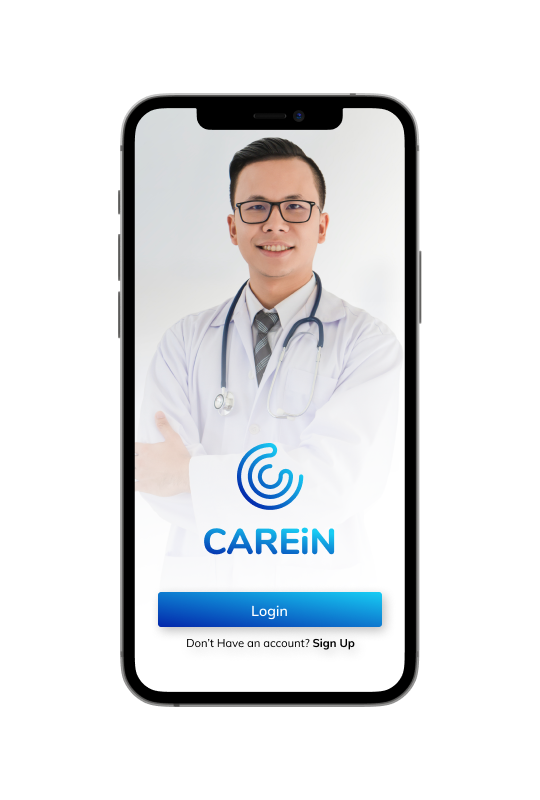
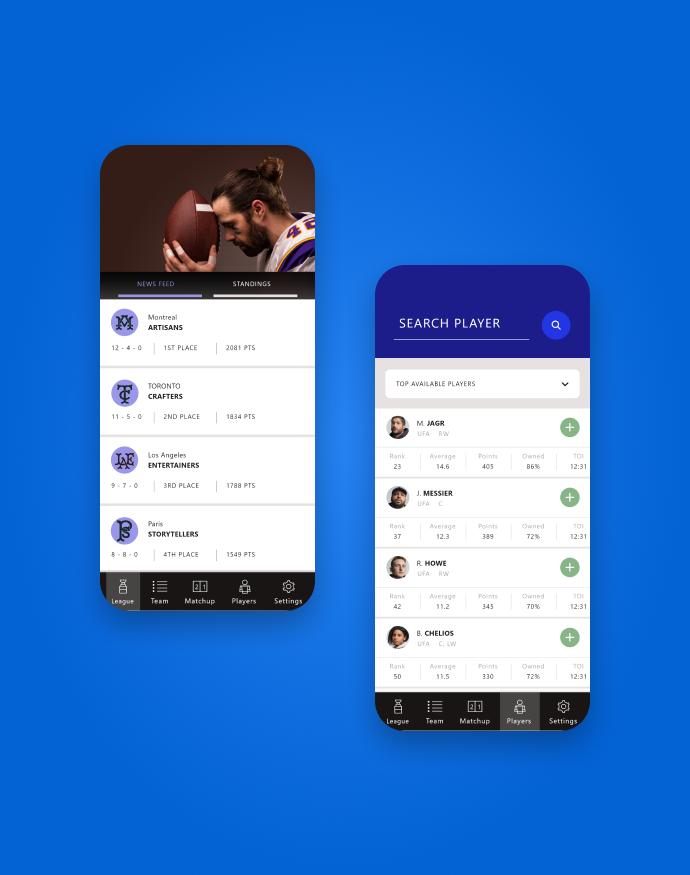
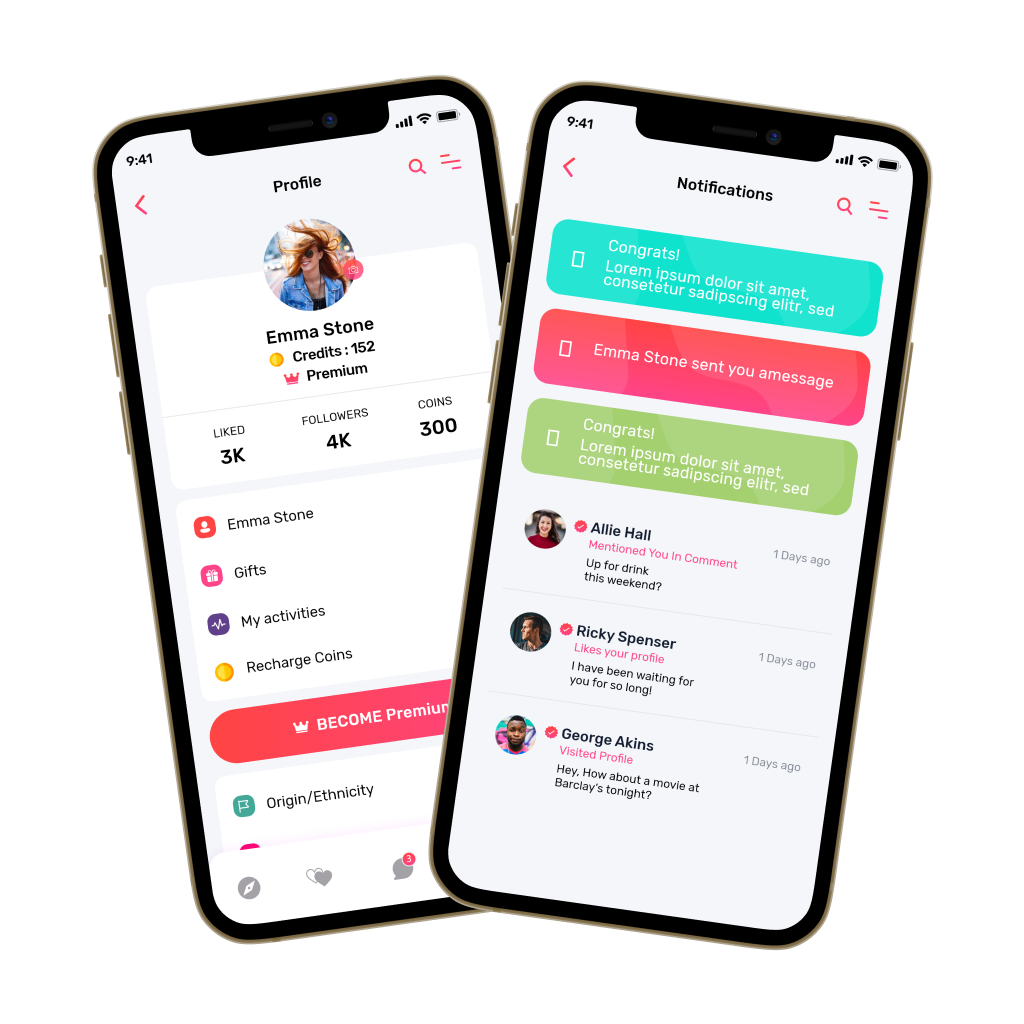


Yuvraj Singh